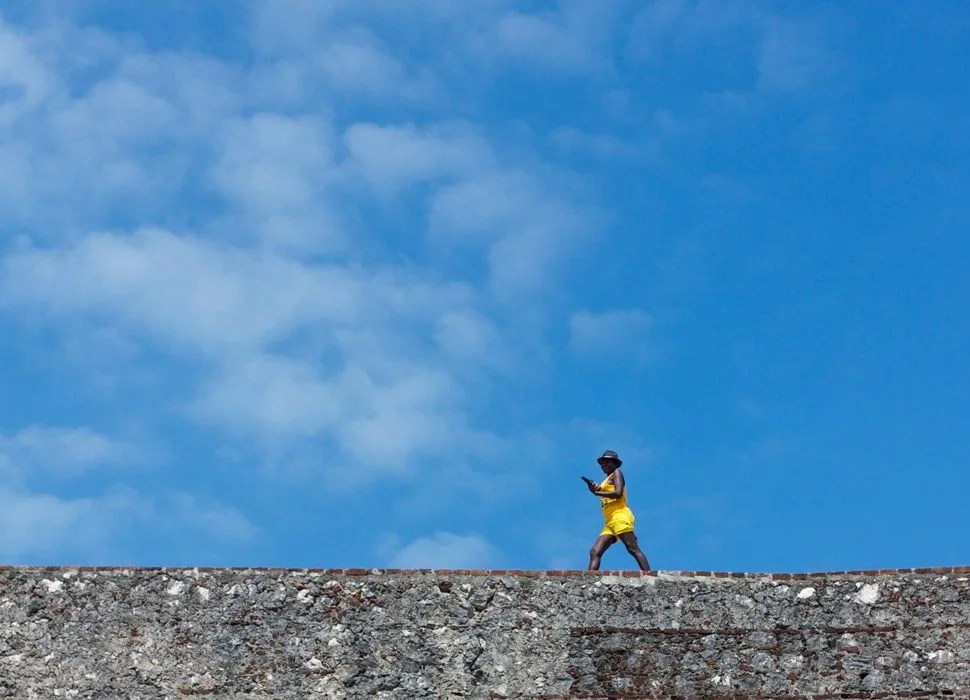The concierge had warned me not to go out on foot, and as I walked through the landscaped gardens in front of the Sheraton in the middle of Addis Ababa, a grandiose hotel I was told is owned by a wealthy Saudi with an Ethiopian mother, behind high walls that blocked out the city’s people and lower, shanty-style buildings, leaving only the modern towers, the tree tops and the blue sky, I was a little trepidatious. On the one hand, I knew hotel staff over-warn tourists. It may have something to do, consciously or not, with emphasizing their value to you (and sometimes to up-sell you on transportation or guides). On the other, even my Ethiopian friends had told me to be careful, to leave my money, my passport, and certainly my camera at the hotel, and I’d got a list of neighborhoods not to go near under any circumstances. A little shaken, I did some googling, and found reports of popular tourist scams, most beginning with someone friendly approaching you out of nowhere and offering to show you around.
Outside the Sheraton gates, the road was a little ramshackle, with maybe a little more garbage lying around than most places. But it was a bright, warm day, and I was in a new city, in a country I’d wanted to visit for years. I walked over to the Mercato, an old part of town, popular with locals but one of the spots I was specifically warned against. There were plenty of shops, lots of cafes, many with a few tables and chairs out front so you could people watch. An elderly man with a middle-aged woman fell into step with me and asked where I was from. His name was Abraham, he said, and the woman was his daughter, Moona. They were originally from the part of Ethiopia that broke off in the civil strife in the 1990s and became Eritrea, and now lived a two- or three-hour walk outside the Mercato. He told me they sold laminated maps of Ethiopia to make ends meet. I didn’t haggle and bought one for the equivalent of $10. I figured that was that, but we continued to talk, and to walk, and then suggested we have a coffee, which is just how those scams I’d read about tended to go. Thinking I was possibly an idiot, and that I’d definitely not be able to get any sympathy back home for whatever was about to happen to me, I said sure.
There’s a certain kind of danger that attracts travelers — the adventuresome, jumping-off-stuff kind of danger. But there’s another, far more pervasive sort that infects even the most carefree of white-watering, BASE-jumping enthusiast. It’s a perceived danger, a fear you could call xenophobia if you wanted to get people’s backs up, but at its most basic level, it’s the danger tourists perceive in cities and countries they’re not familiar with: the danger of getting your pocket picked, of being ripped off, or the more rarefied, Hostel-inspired fear of getting roofied and robbed by some lunatic Eastern European with a dead eye. In essence, it’s a fear of people.
STILL, BE CAREFUL
There are some genuinely dangerous places that you should either take special care in, or simply not travel there at all. Active war zones are no-brainers. As for other trouble zones, the governments of Canada, the United States and the UK all maintain travel advisory sites. These countries err on the side of caution. A recent travel warning from the US site for Haiti, for instance, mentions that violence may erupt during a series of elections. This is not a reason not to go to Haiti during those elections — just a reason not to go to election rallies while there.
There is also the issue of TWF (Traveling While Female). Sexual and other physical assaults are a greater danger to women than men in a number of places, though once again, read the advisories with an eye for detail. In many places where sexual assault of women is more common, such as India, it is almost exclusively related to local women. This does not make it a good thing, just something tourists may not need to worry about very much. And beware the anecdote. Tourism crashed in Mazatlan several years ago when a woman from Calgary was badly beaten in her hotel. It was horrific, and she barely survived, but it was a one-off, the sort of thing that also happens in the US, Canada, the UK, and everywhere else. A reason to mourn, but not a reason to avoid travel. The Canadian government offers a women’s safety travel guide, and the International Women’s Travel Center has published a 2014 list of the 10 worst places for women travelers.
TWLGBT is an issue that actually has more effect on men and the male-oriented-male-identified than women, at least when it comes to the expression of affection or intimacy. Women are permitted to express affection and closeness in most parts of the world, and are not necessarily read as lesbian unless engaging in openly erotic behavior. Men, however, are at risk in many, perhaps most, parts of the world when expressing anything from tender camaraderie to mild affection and beyond. Outtraveler.com published a list earlier this year of the 10 places gay travelers should never go, but generally, it’s a good idea to simply consult this list of 79 countries that have laws against homosexual behavior and either don’t go there, or consider your behavior carefully when you do.

